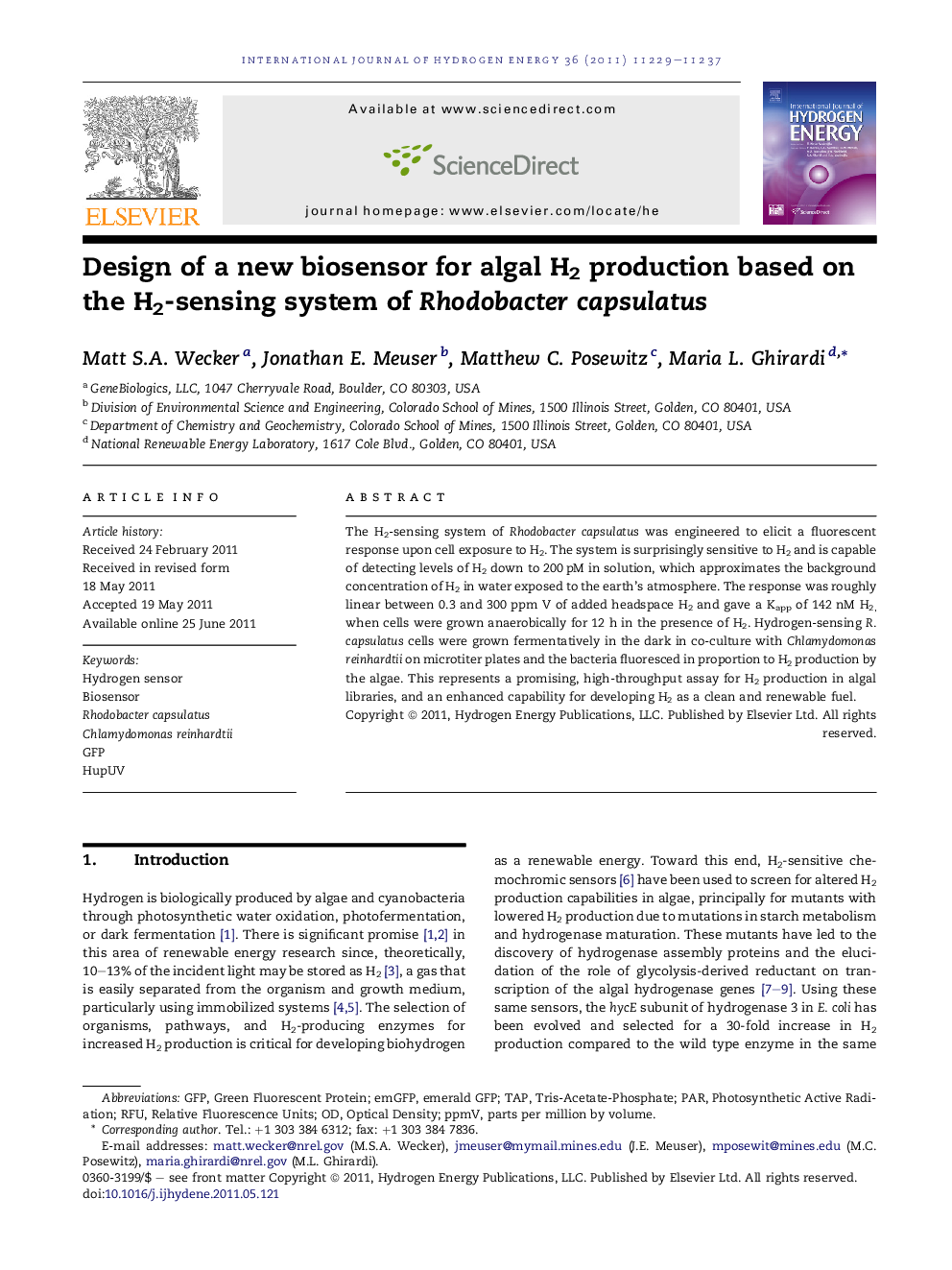| Article ID | Journal | Published Year | Pages | File Type |
|---|---|---|---|---|
| 1277595 | International Journal of Hydrogen Energy | 2011 | 9 Pages |
The H2-sensing system of Rhodobacter capsulatus was engineered to elicit a fluorescent response upon cell exposure to H2. The system is surprisingly sensitive to H2 and is capable of detecting levels of H2 down to 200 pM in solution, which approximates the background concentration of H2 in water exposed to the earth’s atmosphere. The response was roughly linear between 0.3 and 300 ppm V of added headspace H2 and gave a Kapp of 142 nM H2, when cells were grown anaerobically for 12 h in the presence of H2. Hydrogen-sensing R. capsulatus cells were grown fermentatively in the dark in co-culture with Chlamydomonas reinhardtii on microtiter plates and the bacteria fluoresced in proportion to H2 production by the algae. This represents a promising, high-throughput assay for H2 production in algal libraries, and an enhanced capability for developing H2 as a clean and renewable fuel.
► We report a H2-sensing system in bacteria that responds to H2 produced by algae in co-culture by fluorescing. ► Detection levels for H2 are down to 200 pM in solution. ► The assay is nearly linear between 0.3 and 300 ppm of added headspace H2. ► Detection of H2 produced by algae can be carried out in vivo. ► The assay allows high-throughput, H2 production screening of microbial libraries.
